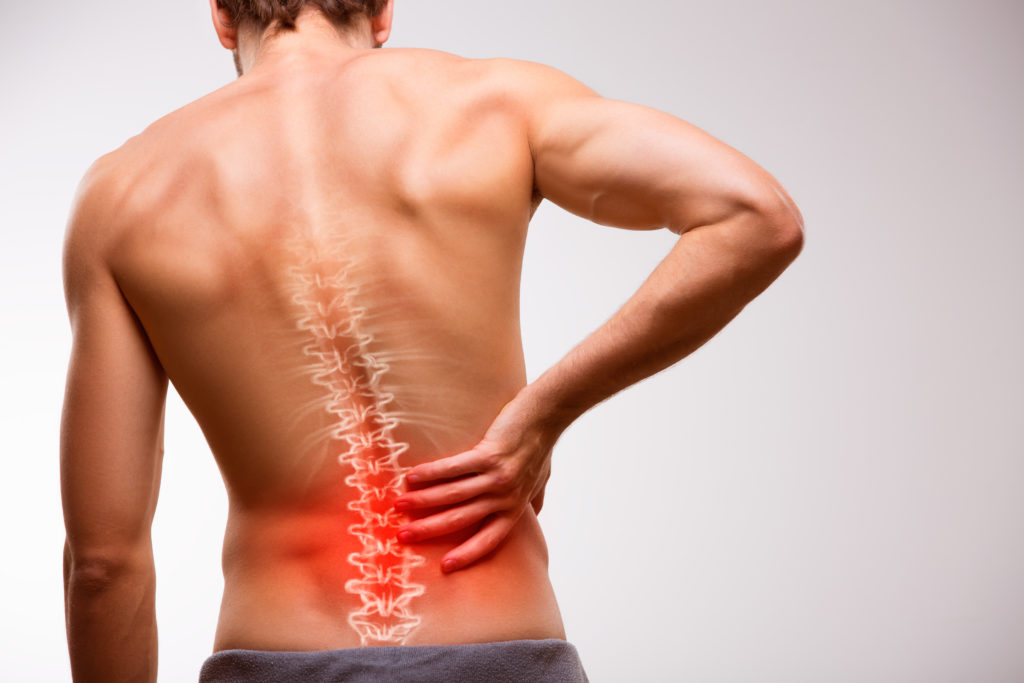Also known as your lower back, the lumbar spine is incredibly strong as it is responsible for protecting your delicate spinal cord and spinal nerve roots. It’s also very flexible as it allows for optimal mobility.

Pain in the lumbar spine is so common that almost everyone experiences it at some point in their lives. The good news is that it often resolves on its own or through conservative measures.
Conditions of the Lumbar Spine
Some of the most common conditions of the lumbar spine include:
Herniated Disc
A herniated disc is the result of one of the discs or soft cushions between your vertebrae or spinal cords pushing out. It can lead to arm or leg pain, numbness or tingling, or a feeling of weakness and is often the result of progressive wear and tear.
Sciatica
Sciatica refers to pain that radiates along the sciatic nerve, which runs down one or both legs from the lower back. The most common symptom of sciatica is pain that radiates from your back to your buttock and down the back of your leg.
Spinal Stenosis
The narrowing of spaces within your spine, which can place pressure on the nerves that travel through them is known as spinal stenosis. Spinal stenosis in the lumbar spine can lead to symptoms such as numbness, tingling, or weakness in a leg or foot, back pain, and pain and cramping during prolonged periods of standing or walking.
Osteoarthritis
Although arthritis is typically associated with the hands and knees, it can also occur in the lower back and lead to pain and stiffness. Osteoarthritis can make it difficult for you to move your lower back and participate in everyday tasks.
Strains
If you repeatedly lift heavy objects or suddenly move your back in an awkward way, you may face muscle or ligament strains or pulled muscles.
How are Lumbar Spine Conditions Diagnosed?
If you are facing lower back pain that doesn’t go away on it’s own, visit a doctor to receive a diagnosis. You can expect the doctor to perform a physical exam, review your medical history, and ask you about your symptoms. They may also conduct imaging tests like x-rays, CT scans, and MRI scans.
How are Lumbar Spine Conditions Treated?
If lumbar spine conditions don’t resolve on their own, medications, stretching, physical therapy, hot and cold compresses, and other conservative treatments may be recommended. In some cases, surgery may be necessary.